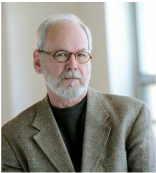AWP 2015, Minneapolis, MN
|
Michael Steinberg
Michael Steinberg, founding editor of Fourth Genre, has written/co-authored five books and a play. His memoir Still Pitching won the ForeWord Magazine/Independent Press Book of the Year. Shorter works have been cited as “Notables “in Best American Essays. Steinberg is a writer-in-residence in the Solstice/Pine Manor MFA program. http://www.mjsteinberg.net/ |
Michael Steinberg
|





